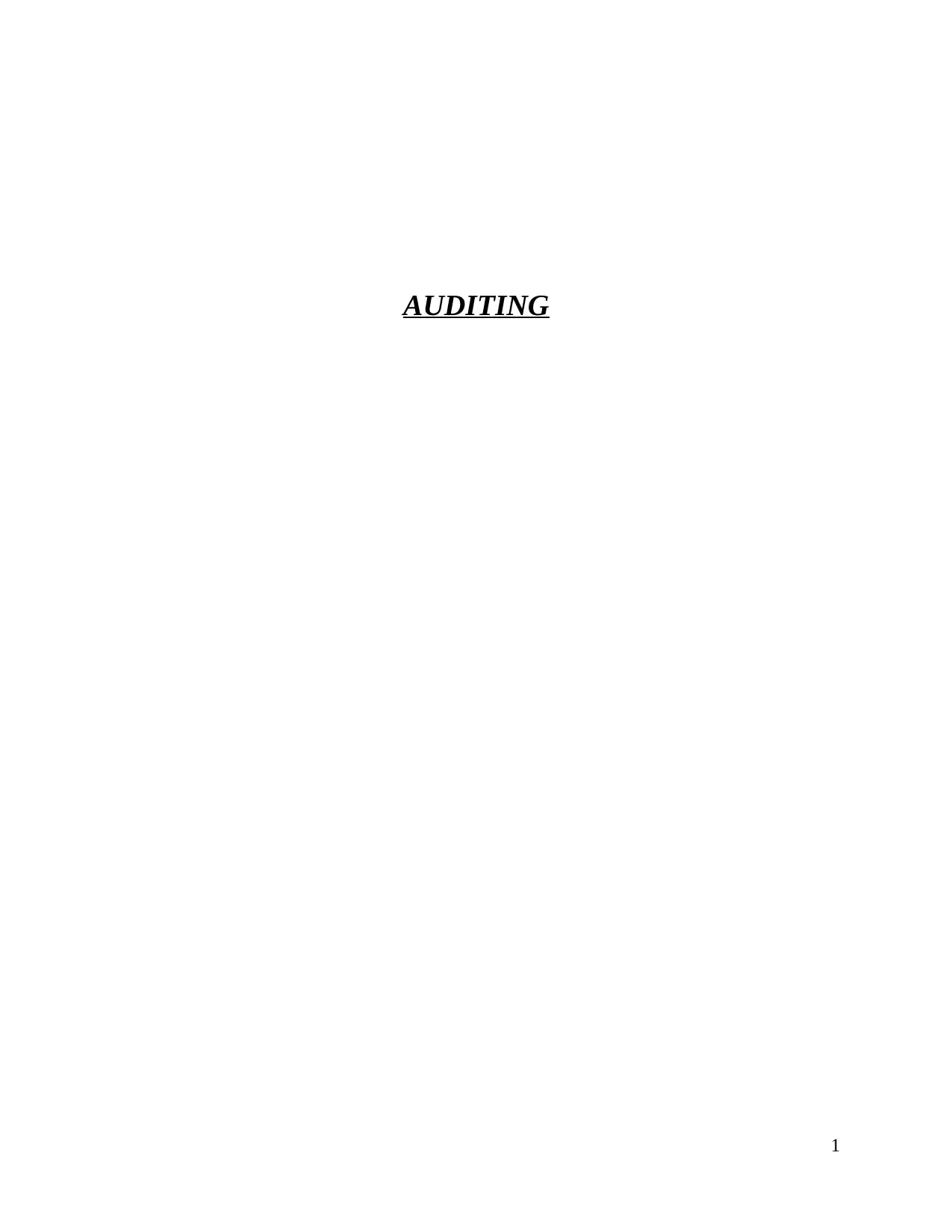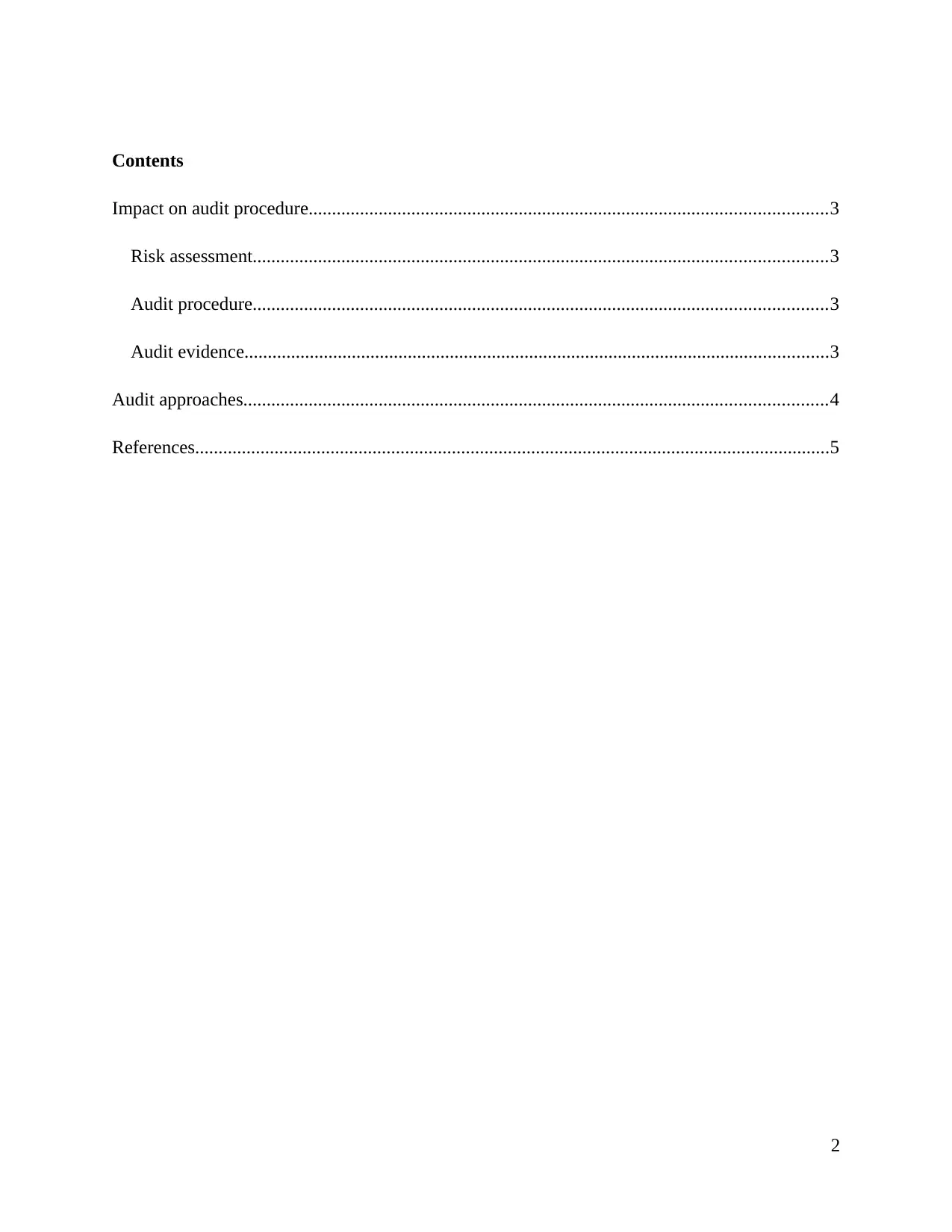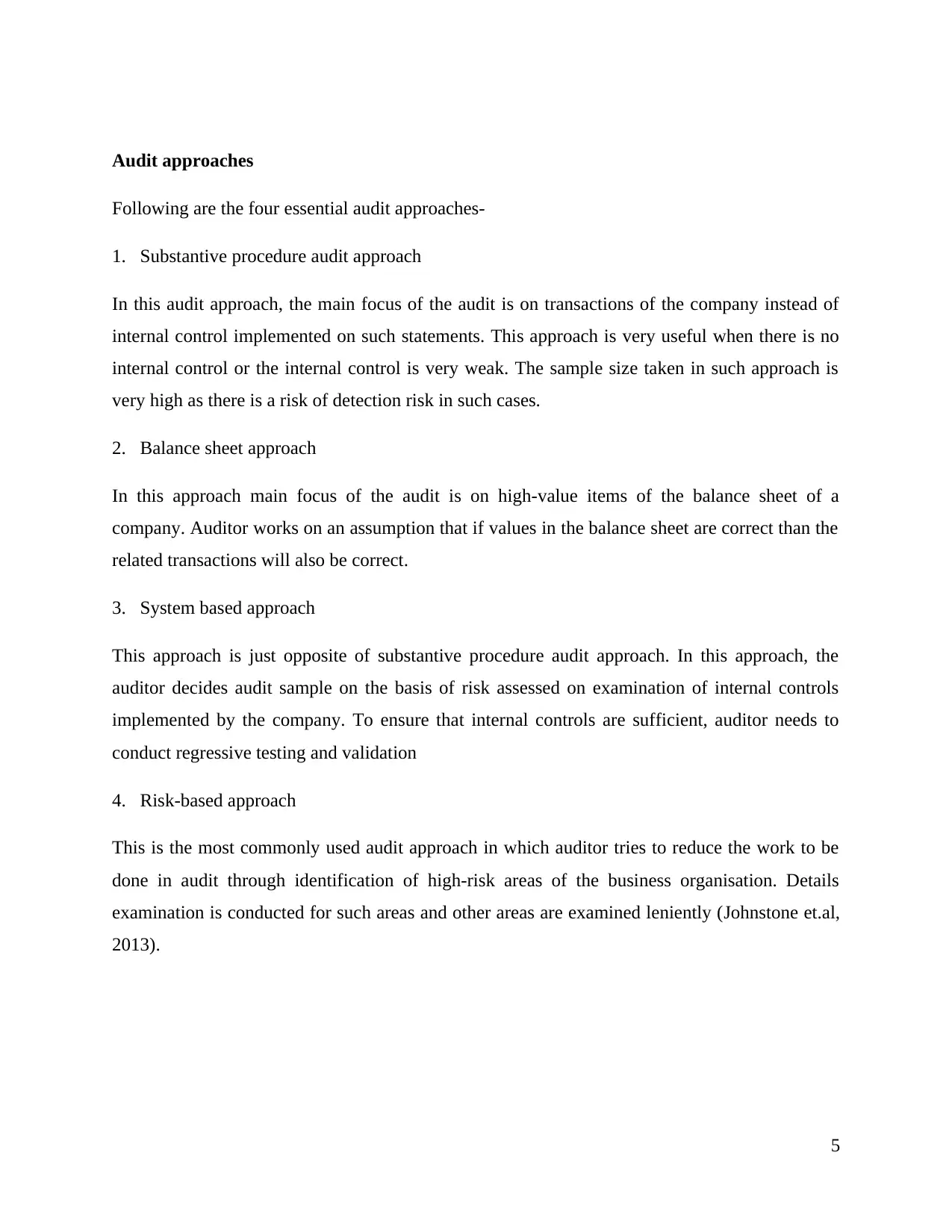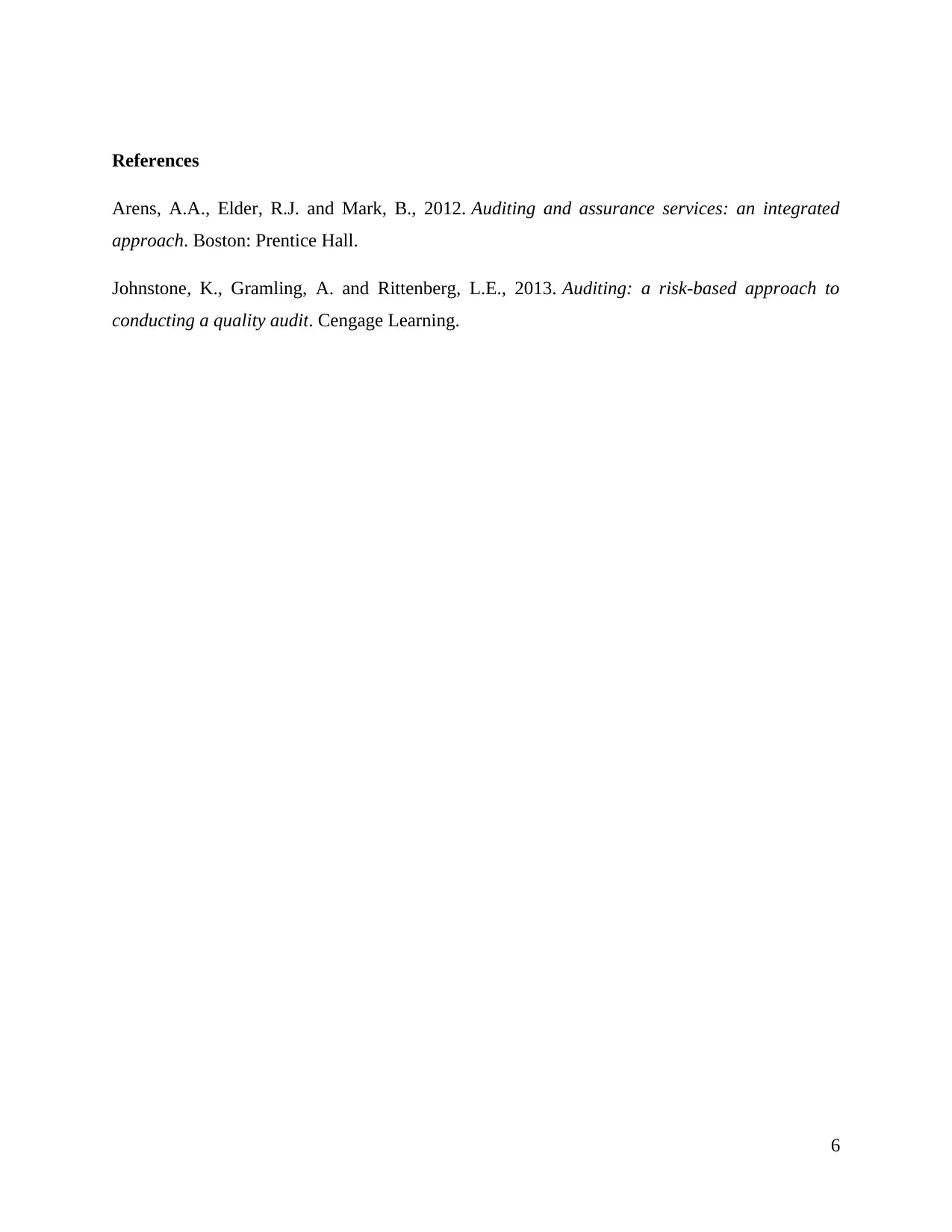Audit Procedures: Risk Assessment, Evidence, and Approaches
VerifiedAdded on 2020/04/15
|6
|660
|335
Report
AI Summary
This report explores the critical elements of auditing, including risk assessment, audit procedures, and audit evidence. It begins by defining risk assessment as the process of identifying areas of a business with a higher likelihood of material misstatement, emphasizing its importance in the audit plan and sample selection. The report then details the significance of audit procedures, highlighting their role in assessing the quality of financial statements and the need for auditor’s written representations. Furthermore, it defines audit evidence as the information collected by an auditor to review internal controls and financial statements, ensuring alignment with accounting standards. Finally, the report examines four essential audit approaches: substantive procedures, balance sheet, system-based, and risk-based approaches, each with distinct methodologies and applications in different audit scenarios.
1 out of 6












![[object Object]](/_next/static/media/star-bottom.7253800d.svg)